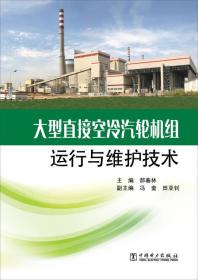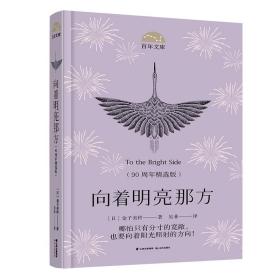
会计专业英语
全新正版未拆封
¥ 30.35 6.1折 ¥ 49.8 全新
仅1件
山东济宁
认证卖家担保交易快速发货售后保障
作者耿云江
出版社人民邮电出版社
出版时间2023-11
版次2
装帧其他
上书时间2024-03-29
- 最新上架
商品详情
- 品相描述:全新
图书标准信息
- 作者 耿云江
- 出版社 人民邮电出版社
- 出版时间 2023-11
- 版次 2
- ISBN 9787115620446
- 定价 49.80元
- 装帧 其他
- 开本 其他
- 纸张 胶版纸
- 页数 188页
- 字数 359千字
- 【内容简介】
-
本书以提高读者的英语应用能力为导向,对财务会计的基本知识进行详细介绍,同时涉及成本会计、审计等内容。全书共10章,主要内容包括会计概述、会计循环、财务报表、流动资产、非流动资产、负债、所有者权益、收入与费用、成本会计、审计等。
本书提供丰富的教学资源,用书教师可登录人邮教育社区(www.ryjiaoyu.com)在本书页面下载获取。
本书不仅可以作为高等院校会计学、财务管理、审计学等专业相关课程的教材,也可以作为财务会计人员的自学用书。 - 【作者简介】
- 耿云江,女,会计学博士,管理科学与工程博士后。东北财经大学会计学院教授,博士生导师。曾赴澳大利亚科廷大学访问交流。主要研究领域为管理会计、社会责任与风险管理等。主要学术兼职有:中国会计学会财务成本分会副秘书长、常务理事,中国成本研究会理事,多家期刊匿名审稿专家。入选“全国会计领军(后备)人才(学术类)”培训项目、辽宁省“百千万人才工程”千人层次、辽宁省高等学校优秀人才支持计划。辽宁省会计咨询专家。 近年来,独立出版专著3部;主编或参编教材8部;在《ICIC EXPRESS LETTERS》《会计研究》《财政研究》等国内外学术刊物发表论文30余篇;主持完成或正在完成国家社会科学基金项目、中国博士后科学基金一等资助项目、辽宁省社会科学规划基金项目、辽宁省教育厅科学研究项目、辽宁省社科联项目等科研课题等10余项。研究成果荣获辽宁省自然科学学术成果奖一等奖、辽宁省哲学社会科学奖?成果奖二等奖、中国会计学会财务成本分会优秀论文二等奖、大连市政府科学著作奖三等奖等奖项。国家级一流本科课程负责人、国家级精品资源共享课主讲人。 辽宁省普通高等学校本科教学名师。荣获“国家级教学成果奖二等奖”、“辽宁省教学成果奖一等奖”、“东北财经大学教学优秀奖一等奖”等奖项。曾指导学生获得美国管理会计师协会(IMA)校园管理会计案例大赛全国总冠军、中国MPAcc学生案例大赛全国二等奖、东北赛区一等奖等多个奖项。
- 【目录】
-
Chapter 1 Overview of
Accounting 1
Listening Materials 1
Learning Objectives 1
Chapter Mind Map 1
Reading Materials 2
1.1 Accounting and Accounting Profession 2
1.1.1 Ethics of Accounting 2
1.1.2 Functions of Accounting 3
1.1.3 Users of Accounting Information 3
1.1.4 Accounting Profession 4
1.2 Accounting Assumptions 4
1.2.1 Business Entity 4
1.2.2 Going-concern 5
1.2.3 Monetary Unit 5
1.2.4 Time Period 6
1.3 Accounting Principles 7
1.3.1 Accrual Basis 7
1.3.2 Historical Cost 8
1.3.3 Realization 9
1.3.4 Matching 9
1.3.5 Full Disclosure 9
1.4 Quality Characteristics of Accounting Information 10
1.4.1 Relevance 11
1.4.2 Reliability 11
1.4.3 Comparability 12
1.4.4 Materiality 12
Key Terminologies 12
Review and Discussion Questions 14
Exercises 14
参考译文 16
Chapter 2 Accounting Cycle 24
Listening Materials 24
Learning Objectives 24
Chapter Mind Map 24
Reading Materials 25
2.1 Accounting Equation and Double-entry Accounting 25
2.1.1 Accounting Equation 25
2.1.2 Double-entry System 25
2.2 Definition of Accounting Cycle 26
2.3 Journals and Ledgers 27
2.3.1 Journals 27
2.3.2 Ledgers 27
2.4 Adjusting 28
2.4.1 Prepaid Expenses 28
2.4.2 Accrued Expenses 29
2.4.3 Accrued Revenues 29
2.4.4 Unearned Revenues 30
2.5 Closing Process 30
2.5.1 Temporary and Permanent Accounts 30
2.5.2 Posting Closing Entries 30
2.6 Trial Balance 31
2.6.1 Steps in Preparing a Trial Balance 31
2.6.2 Searching for and Correcting Errors 32
Key Terminologies 33
Review and Discussion Questions 34
Exercises 34
参考译文 35
Chapter 3 Financial Statements 42
Listening Materials 42
Learning Objectives 42
Chapter Mind Map 42
Reading Materials 43
3.1 Balance Sheet 43
3.1.1 Components of Balance Sheet 43
3.1.2 Format of Balance Sheet 44
3.2 Income Statement 46
3.2.1 Components of Income Statement 47
3.2.2 Forms of Income Statement 48
3.3 Cash Flow Statement 49
3.3.1 Components of Cash Flow Statement 50
3.3.2 Preparation of Cash Flow Statement 50
3.4 Statement of Changes in Equity 53
3.4.1 Components of Statement of Changes in Equity 53
3.4.2 Preparation of Statement of Changes in Equity 53
3.5 Notes to Financial Statements 55
3.5.1 Accounting Policy 55
3.5.2 Financial Instruments 55
3.5.3 Related Party Transactions 55
3.5.4 Contingencies 56
3.5.5 Subsequent Events 56
Key Terminologies 58
Review and Discussion Questions 59
Exercises 60
参考译文 61
Chapter 4 Current Assets 74
Listening Materials 74
Learning Objectives 74
Chapter Mind Map 74
Reading Materials 75
4.1 Monetary Capital 75
4.1.1 Cash 75
4.1.2 Bank Reconciliation 75
4.1.3 Internal Control Over Cash 76
4.1.4 Petty Cash Fund 77
4.1.5 Cash Surplus and Shortage 77
4.2 Receivables 78
4.2.1 Classification of Receivables 78
4.2.2 Bad Debts 78
4.2.3 Estimation of Bad Debts 79
4.3 Inventories 80
4.3.1 Inventory System 81
4.3.2 Cost of Inventory Acquired 81
4.3.3 Ending Inventory Valuation 82
Key Terminologies 83
Review and Discussion Questions 84
Exercises 84
参考译文 85
Chapter 5 Non-current Assets 93
Listening Materials 93
Learning Objectives 93
Chapter Mind Map 93
Reading Materials 94
5.1 Fixed Assets 94
5.1.1 Definition and Characteristics of Fixed Assets 94
5.1.2 Classification of Fixed Assets 94
5.1.3 Costs of Fixed Assets 95
5.1.4 Post-acquisition Expenditures 96
5.1.5 Depreciation and Impairment 96
5.1.6 Disposals of Fixed Assets 97
5.2 Intangible Assets 98
5.2.1 Definition and Characteristics of Intangible Assets 98
5.2.2 Common Types of Intangible Assets 98
5.2.3 Recognition and Measurement of Intangible Assets 99
5.2.4 Post-acquisition Measurement 100
5.2.5 Disposals of Intangible Assets 100
5.3 Investments in Securities 101
5.3.1 Purposes of Investment in Securities 101
5.3.2 Types of Investment in Securities 101
Key Terminologies 103
Review and Discussion Questions 103
Exercises 104
参考译文 105
Chapter 6 Liabilities 112
Listening Materials 112
Learning Objectives 112
Chapter Mind Map 112
Reading Materials 113
6.1 Current Liabilities 113
6.1.1 Definition of Current Liabilities 113
6.1.2 Accounts Payable 113
6.1.3 Short-term Notes Payable 114
6.1.4 Unearned Revenue 114
6.1.5 Short-term Borrowing 114
6.1.6 Accrued Liabilities 114
6.1.7 Dividend Payable 115
6.1.8 Current Portion of Long-term Obligation 115
6.2 Non-current Liabilities 116
6.2.1 Long-term Borrowing 116
6.2.2 Bonds Payable 116
6.2.3 Long-term Notes Payable 117
6.2.4 Pension Plans 117
Key Terminologies 118
Review and Discussion Questions 118
Exercises 119
参考译文 119
Chapter 7 Owner’s Equity 124
Listening Materials 124
Learning Objectives 124
Chapter Mind Map 124
Reading Materials 124
7.1 Forms of Business Entity 125
7.1.1 Sole Proprietorship 125
7.1.2 Partnership 125
7.1.3 Corporation 125
7.2 Owner’s Equity of Corporations 126
7.2.1 Rights of Shareholders 126
7.2.2 Paid-in Capital 127
7.2.3 Retained Earnings 128
7.2.4 Dividends 128
Key Terminologies 129
Review and Discussion Questions 130
Exercises 130
参考译文 131
Chapter 8 Revenue and
Expense 135
Listening Materials 135
Learning Objectives 135
Chapter Mind Map 135
Reading Materials 135
8.1 Revenue 136
8.1.1 Definition of Revenue 136
8.1.2 The Earning Process of Revenue 136
8.1.3 Recognition of Revenue 137
8.2 Expense 138
8.2.1 Definition of Expense 138
8.2.2 Recognition of Expense 139
8.2.3 Main Expense Items 139
Key Terminologies 141
Review and Discussion Questions 141
Exercises 141
参考译文 142
Chapter 9 Cost Accounting 147
Listening Materials 147
Learning Objectives 147
Chapter Mind Map 147
Reading Materials 148
9.1 Overview of Cost Accounting 148
9.1.1 Definition of Cost Accounting 148
9.1.2 Features of Cost Accounting 148
9.1.3 Comparison Between Cost Accounting and Financial Accounting 149
9.2 Cost Classification 149
9.2.1 Direct Cost and Indirect Cost 149
9.2.2 Product Costs and Period Costs 150
9.2.3 Variable Cost, Fixed Cost and Mixed Cost 151
9.2.4 Incremental Cost, Opportunity Cost, and Sunk Cost 151
9.3 Costing Method 152
9.3.1 Job-order Costing 153
9.3.2 Process Costing 153
9.3.3 Activity Based Costing 154
Key Terminologies 156
Review and Discussion Questions 157
Exercises 157
参考译文 158
Chapter 10 Auditing 165
Listening Materials 165
Learning Objectives 165
Chapter Mind Map 165
Reading Materials 166
10.1 Introduction to Auditing 166
10.1.1 Definition of Auditing 166
10.1.2 Classification of Auditing 167
10.1.3 Types of Auditors 168
10.1.4 Auditing Report 169
10.2 Auditing Procedure 170
10.2.1 Management Assertions 170
10.2.2 Identify Auditing Objectives 171
10.2.3 Implementation of Auditing 172
10.3 Internal Control 175
10.3.1 Definition of Internal Control 175
10.3.2 Development History of Internal Control 175
10.3.3 Elements of Internal Control 176
Key Terminologies 178
Review and Discussion Questions 179
Exercises 179
参考译文 180
点击展开
点击收起
— 没有更多了 —












以下为对购买帮助不大的评价